Vertical Stabilizer Skin Riveting + Installing VOR Antenna
Vertical stabilizer skin is completely riveted, and a VOR antenna has also been installed.
We riveted the vertical stabilizer skin as well as installed a VOR antenna on the top of it, for navigation using radio signals, which will facilitate ILS approaches as well as VOR navigation.
Internal Wiring
For internal wiring, two different cables were routed. One was the coax cable which came with the VOR antenna, and another were 18awg power wires for the tail beacon. Both the wires were installed through the ribs using 1/4" snap bushings. Additionally, the power wires were covered with a braided sleeve. 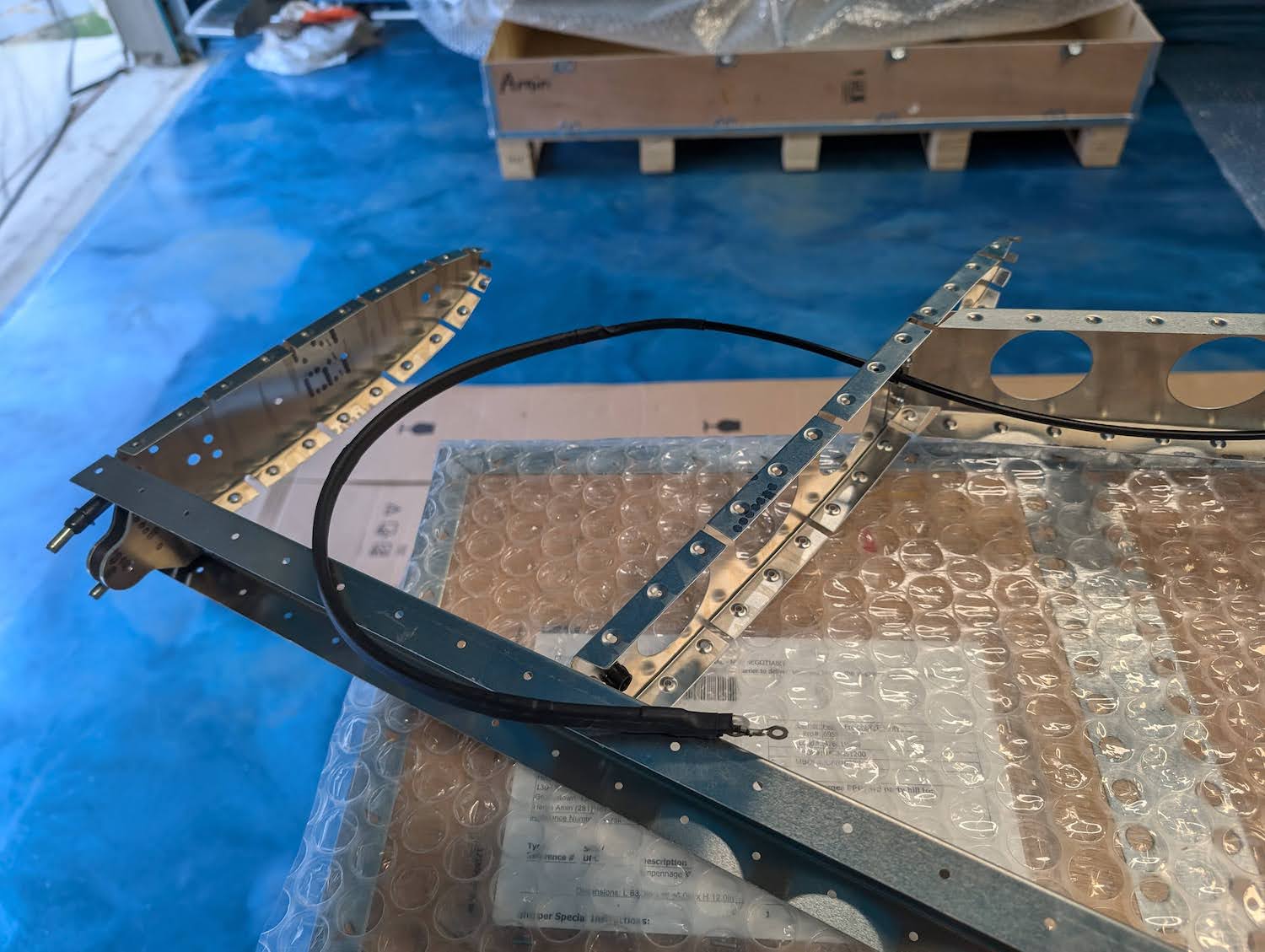 Balun tramsmitter end of the coax cable.
Balun tramsmitter end of the coax cable. 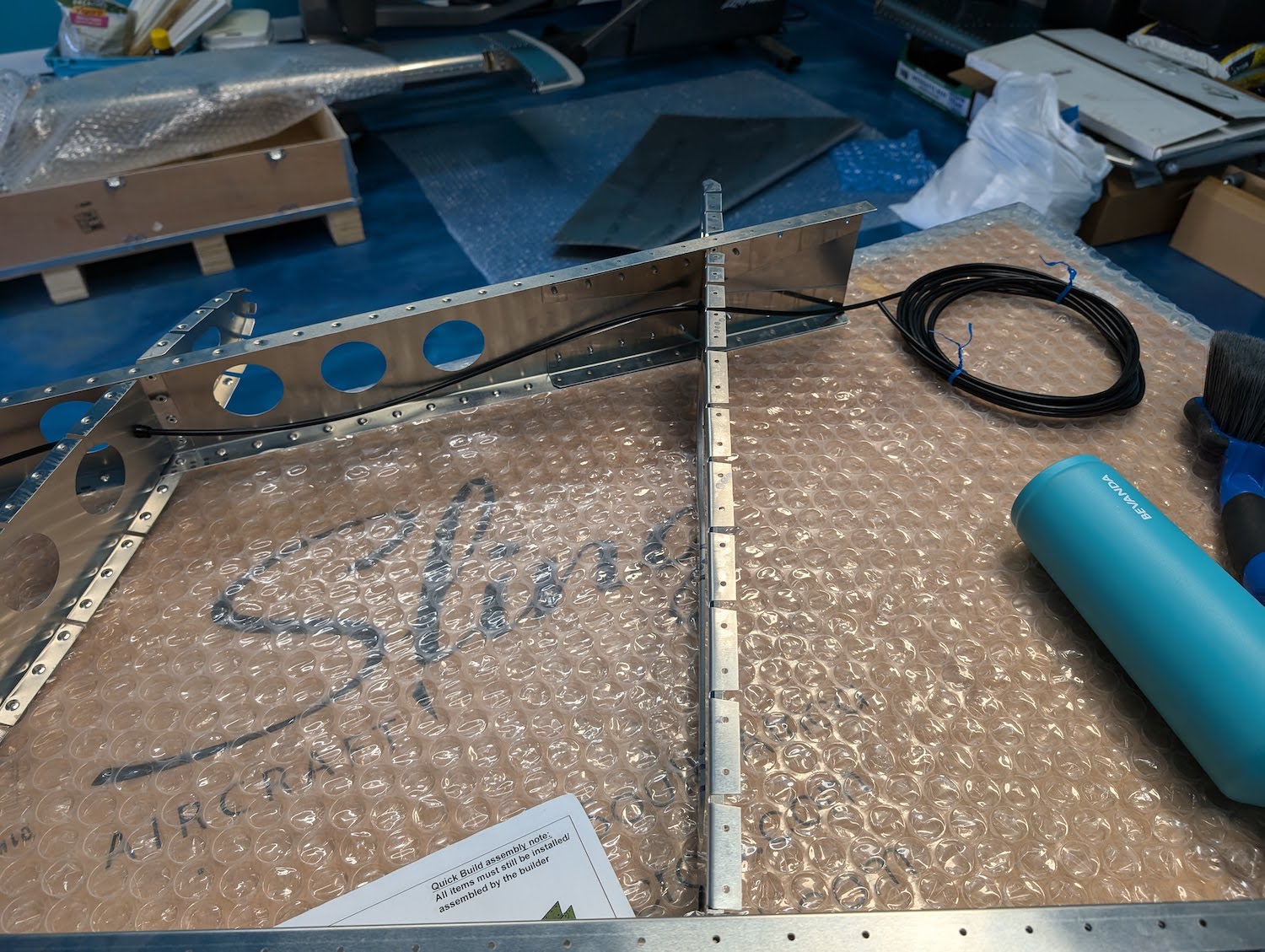 Coax cable.
Coax cable. 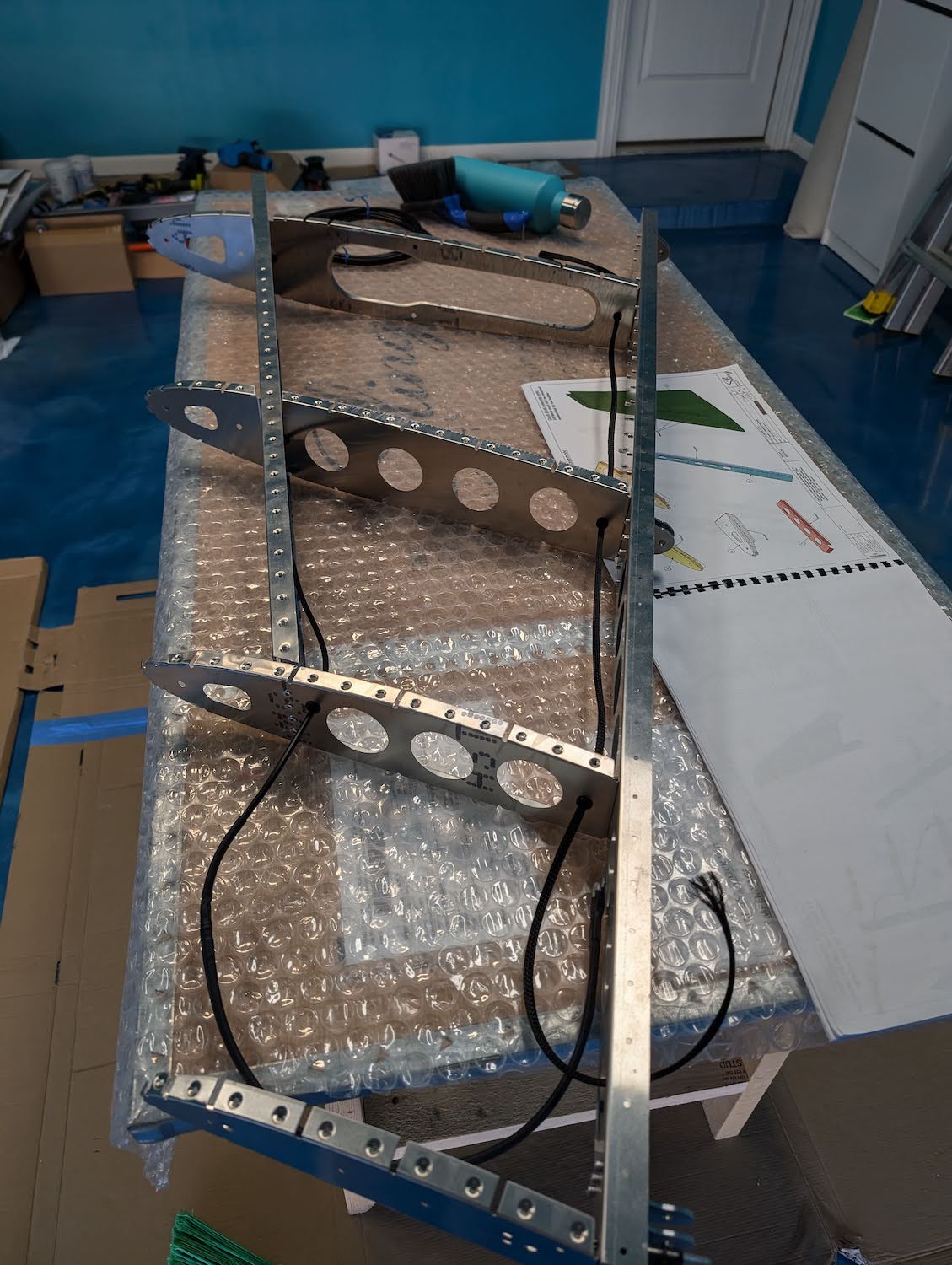 Overall wiring.
Overall wiring.
Skin Riveting
Most of the skin was riveted to the internal structure with an except of the parts needed to install the VOR antenna rib. It was mostly straightforward, one of the holes developed some cracks, so it was sanded to stop the propagation of the cracks before riveting. 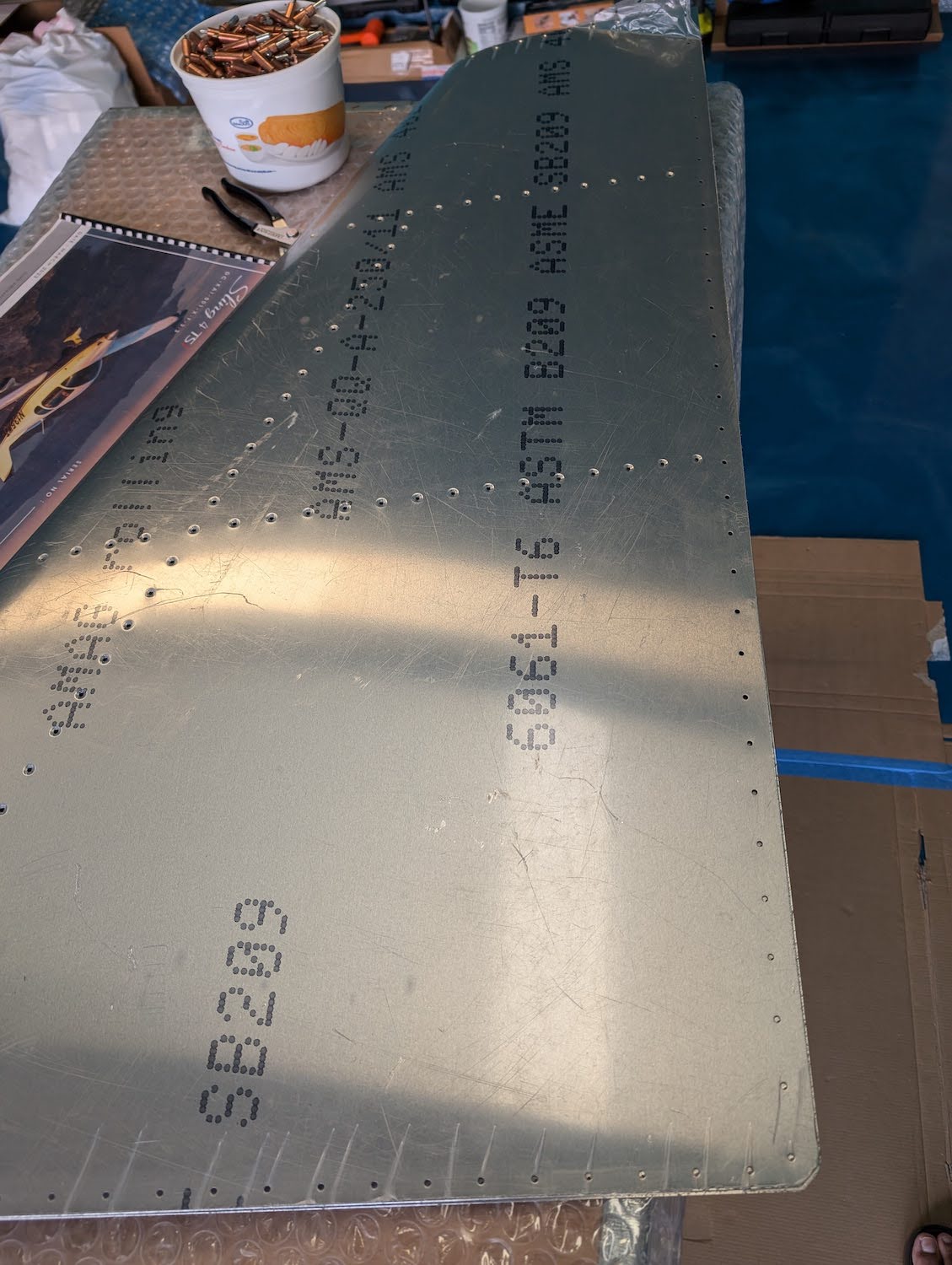 Dimpled skin.
Dimpled skin. 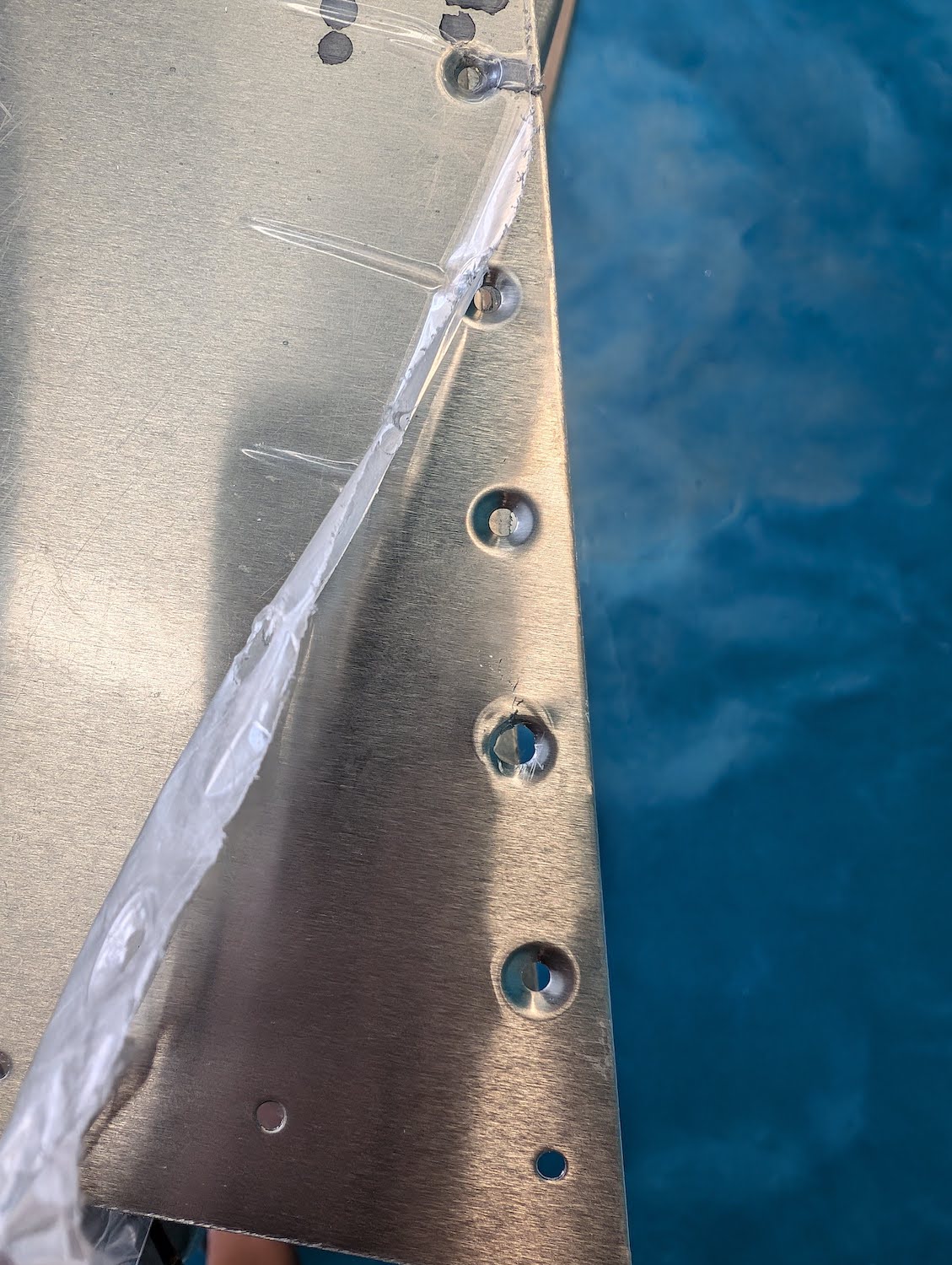 Cracks in hole fixed by enlarging the hole.
Cracks in hole fixed by enlarging the hole. 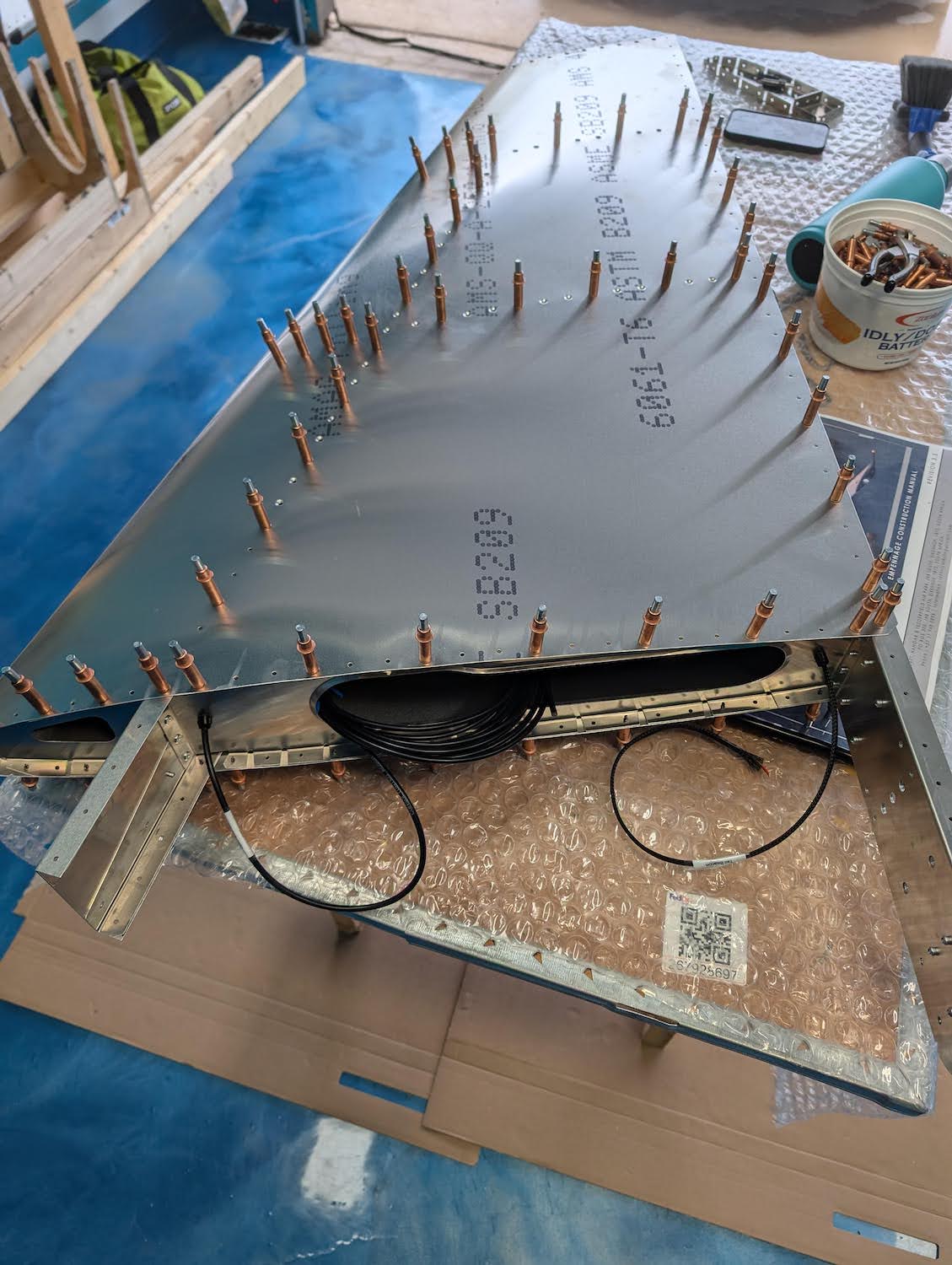 Skin temporarily assembled using clecos.
Skin temporarily assembled using clecos. 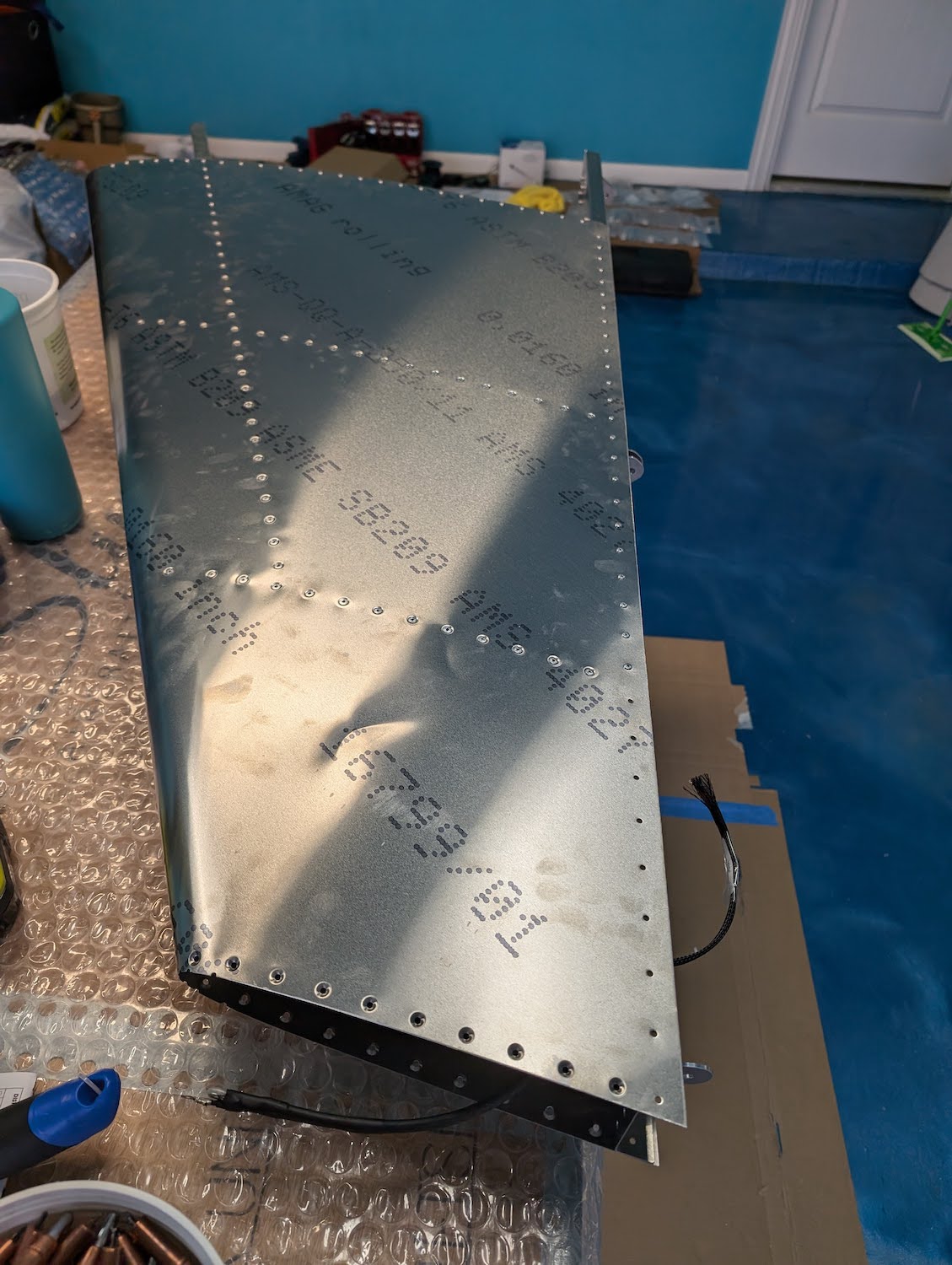 Most of the skin riveted.
Most of the skin riveted.
VOR Antenna Installation
VOR antenna installation was a little challenging since this version of the antenna was a little wider to the point that it slightly stretched the rib, but not enough to prevent the skin from riveting. However, as a consequence of it, there was no space to install the rubber grommets, so instead JB Weld high heat epoxy was used, which also helped in avoiding ground loops, which we confirmed using a multimeter. Additionally, on the top rib where the VOR antenna was installed, a doubler was also used in between the Rib and the Antenna puck. 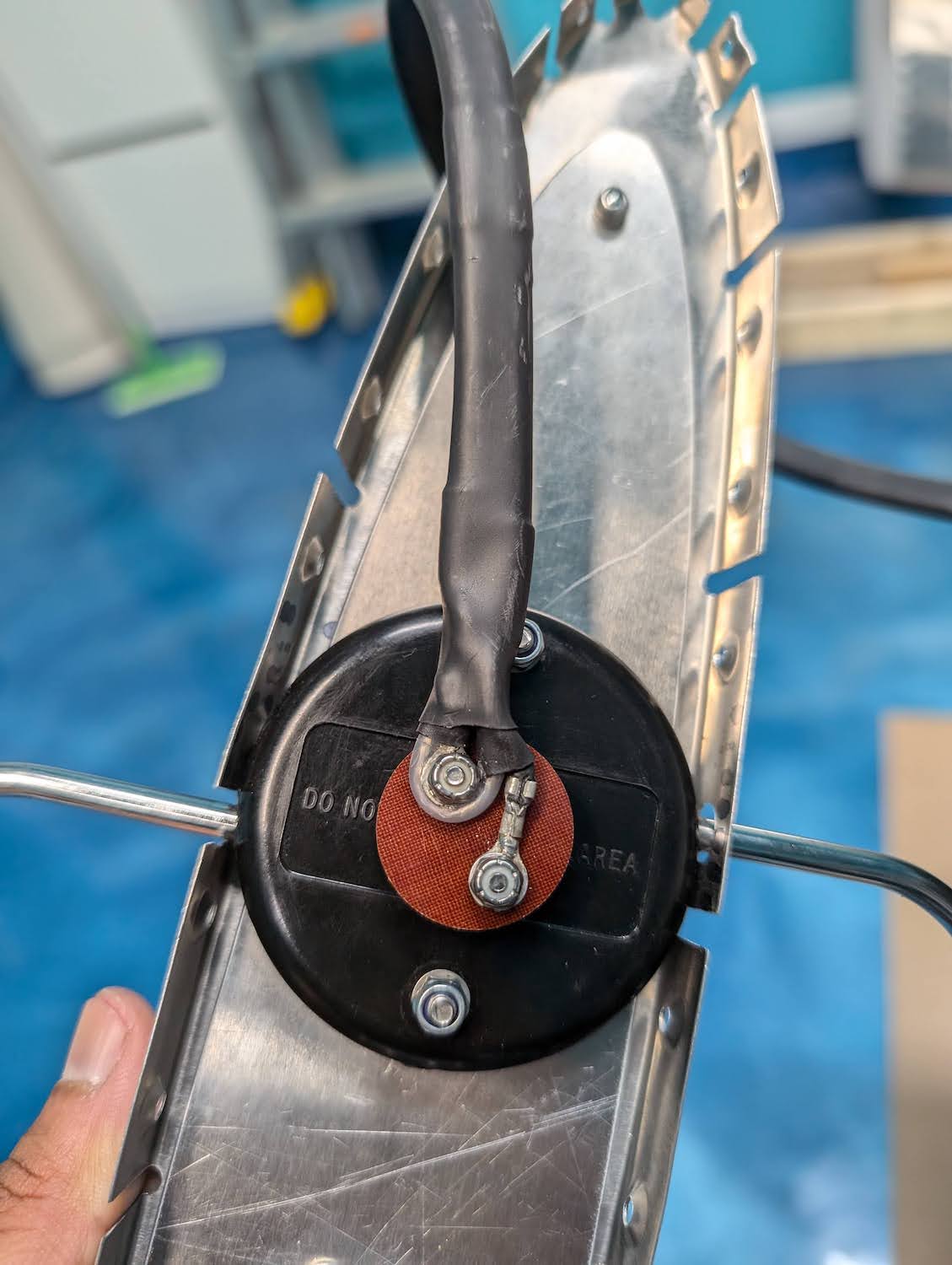 Antenna puck bolted and coax cable installed using the provided nylon nuts.
Antenna puck bolted and coax cable installed using the provided nylon nuts. 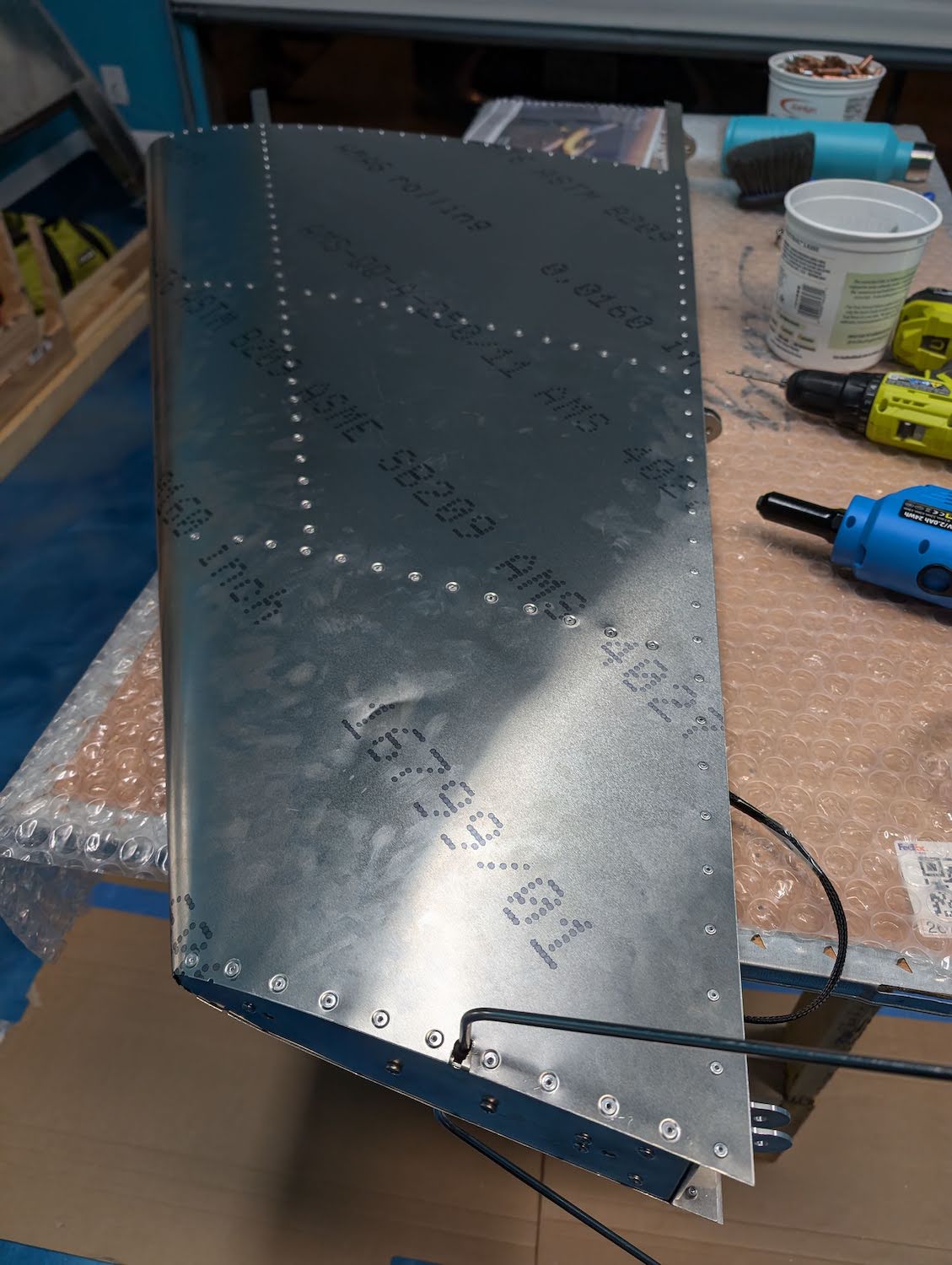 Rib riveted to the skin after installing the antenna on it.
Rib riveted to the skin after installing the antenna on it. 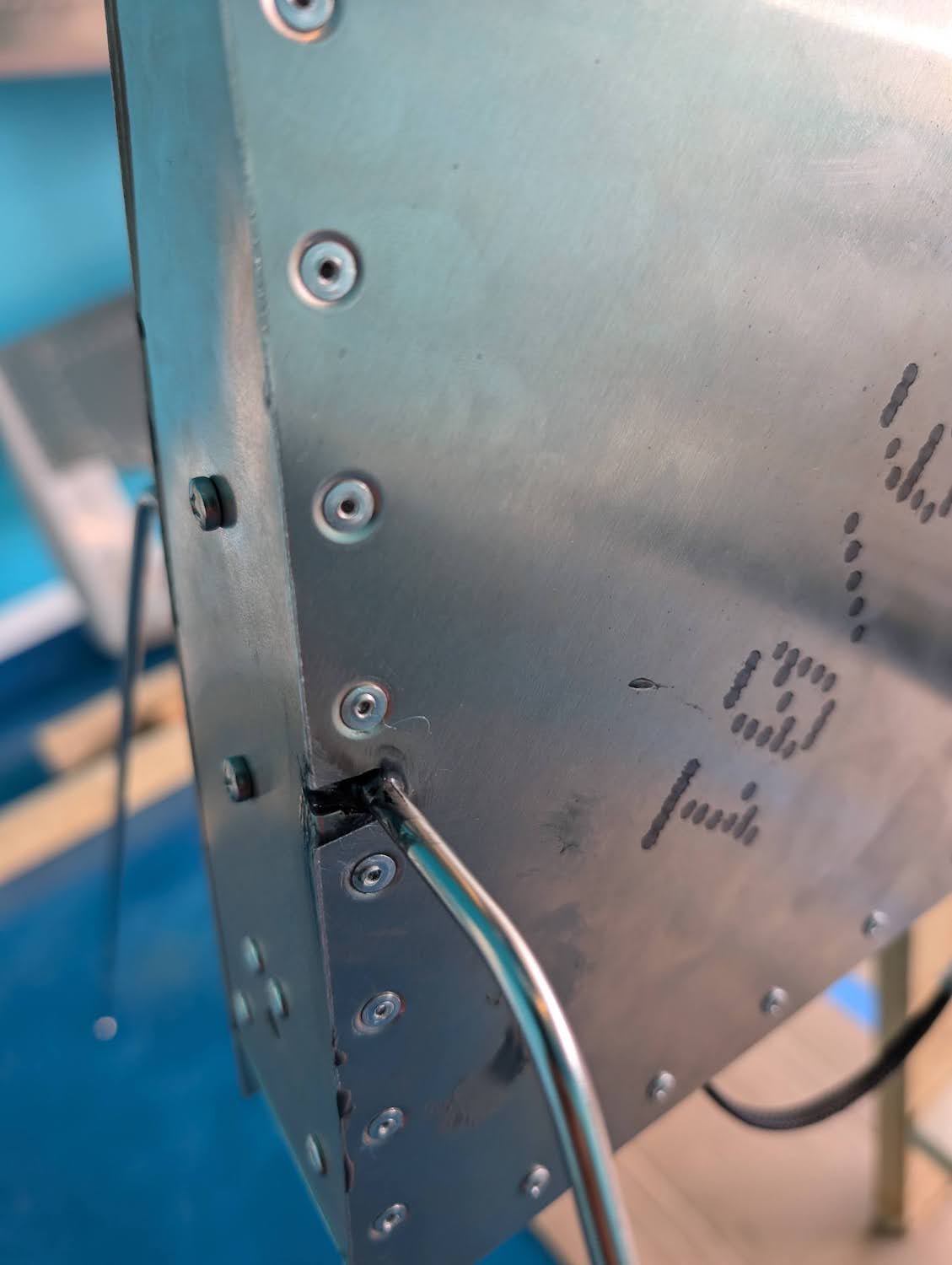 Epoxy used as an insulator and for additional strength.
Epoxy used as an insulator and for additional strength. 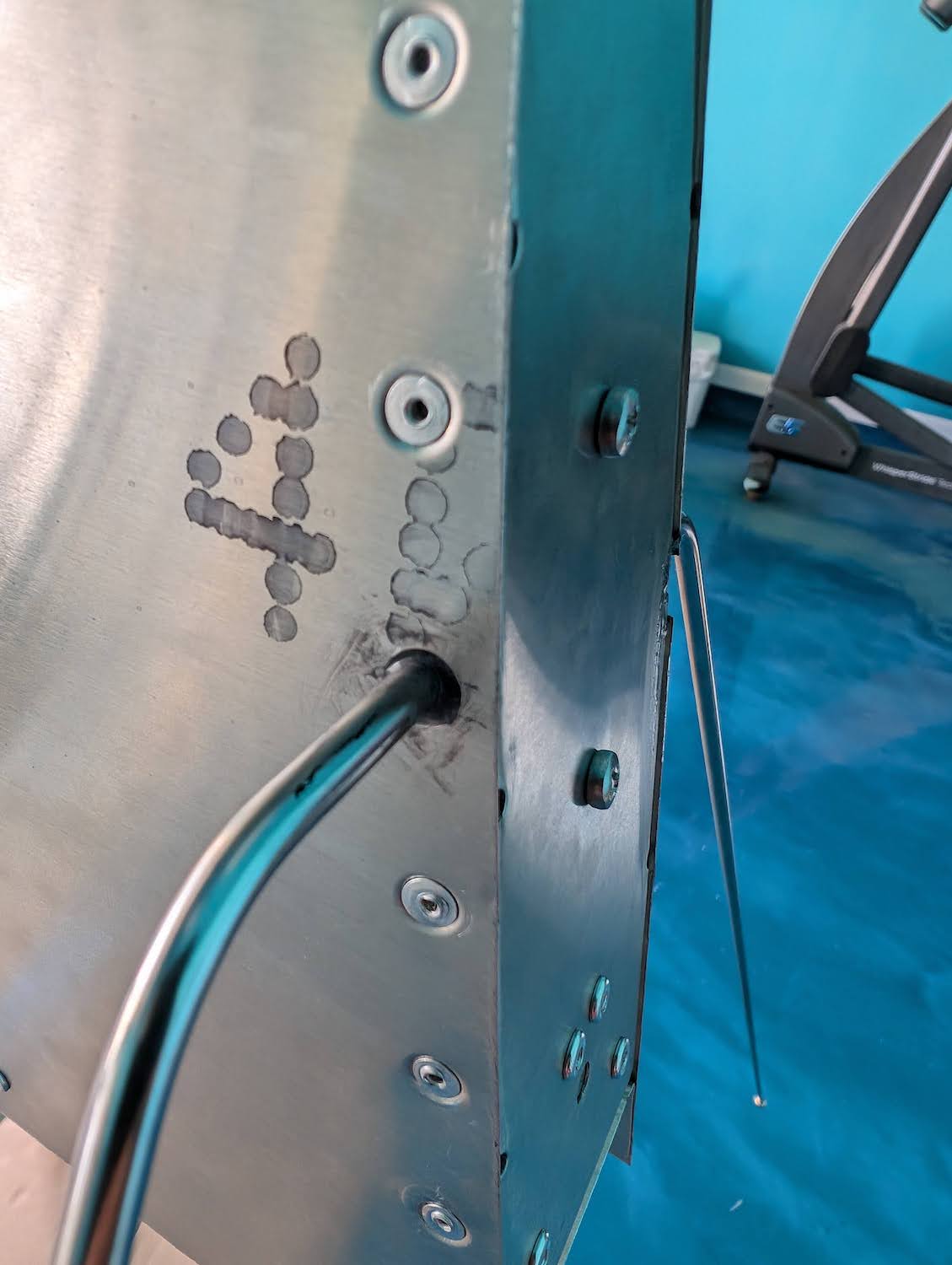 Epoxy used as an insulator and for additional strength.
Epoxy used as an insulator and for additional strength.
Avionics & Tools
For the VOR antenna, we used Rami AV-12L which comes with the cable and an integrated balun transmitter in it. Additionally, to label the wires we also bought a Portable Label Maker, which uses thermal printing for durability.